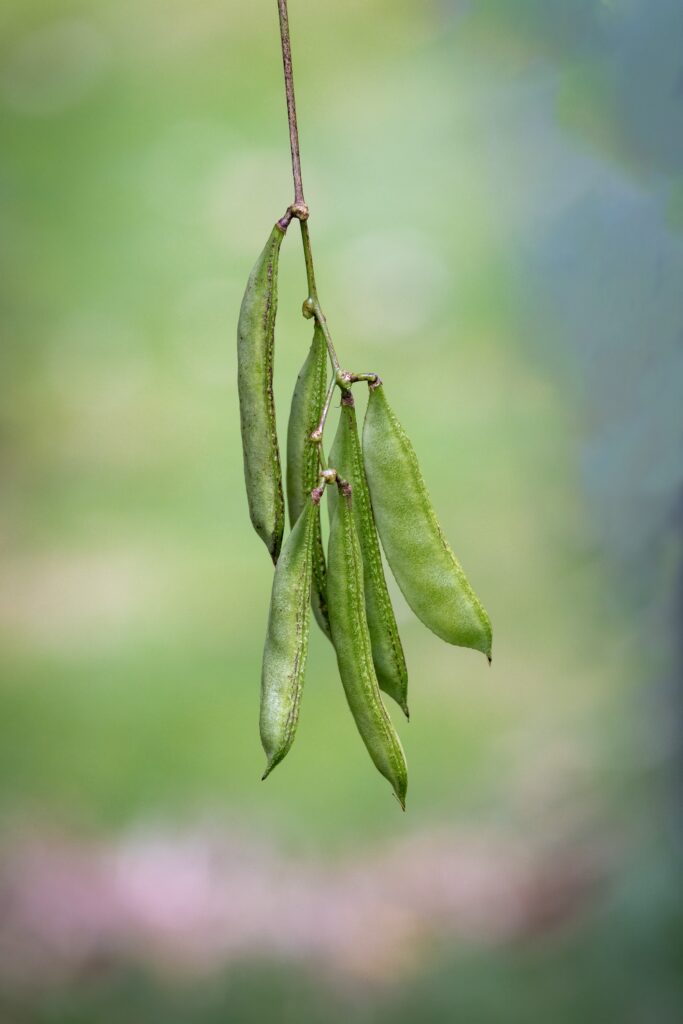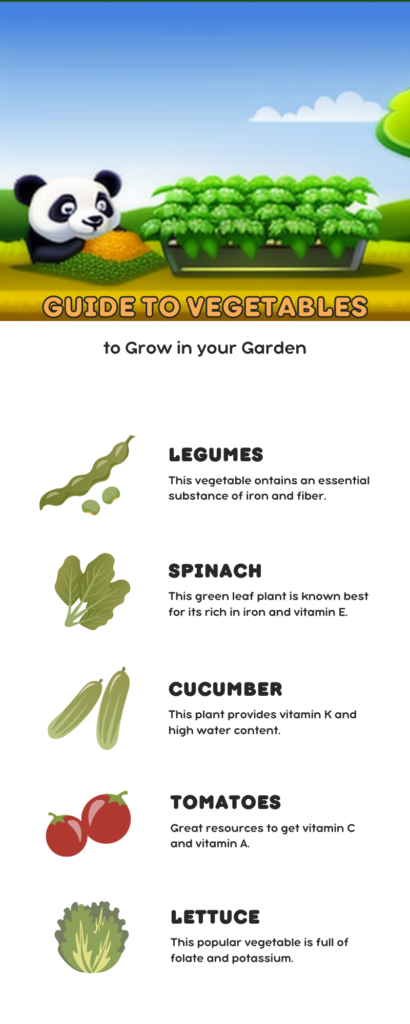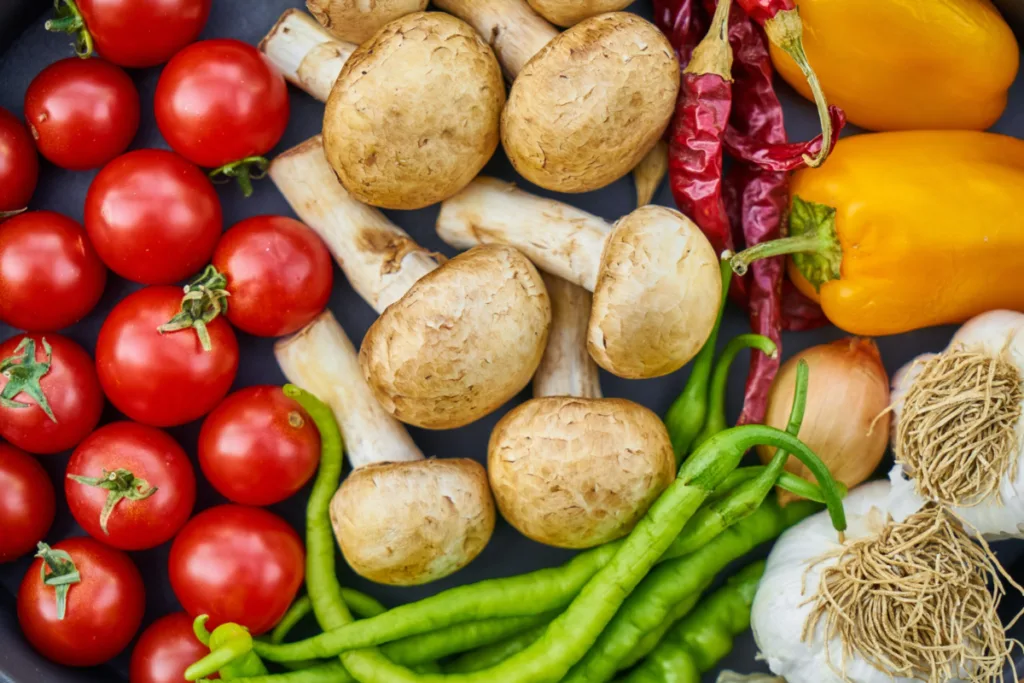Planting a vegetable garden is the way to go if you want to get fresh, healthy produce straight from your own backyard! But with so many types of veggies out there, it can be overwhelming to know where to begin. My friends and family often ask me for advice because they’re not sure where to start. So I put together this guide for anyone who is looking for more information about vegetables and gardening ideas.
To begin with, let’s take a look at the different families of vegetables. Understanding these categories can help you choose vegetables that will thrive in your garden and complement each other.
How to Use this Gardening Idea Guide
If you’re new to gardening or looking to try out new vegetables this season, categorizing vegetables by type is a great way to get started. This article breaks down the different types of vegetables and offers a quick guide at the end to help you choose which ones to plant. By understanding the different types and their growing needs, you can make informed decisions about what to grow in your garden and ensure a successful harvest. Whether you’re interested in leafy greens, root vegetables, or legumes, this article has got you covered.
Curcubits (Gourd family)


First, we’re going to dive into the exciting world of cucurbits, also known as the gourd family. If you’re a fan of veggies like cucumbers, pumpkins, and zucchini, then you already know how delicious and versatile these plants can be.
But what else do we need to know about cucurbits? Well, for starters, they tend to be sprawlers. That means they need plenty of room to grow and expand their vines. So, make sure to give them ample space in your garden or plant them in containers that are big enough to accommodate their growth.
Another important thing to note is that cucurbits are thirsty plants. They require a lot of water, especially during the hotter months of the year. So, be sure to water them regularly and deeply to keep them happy and healthy.
Lastly, cucurbits need plenty of sunshine to thrive. They love basking in the warmth of the sun, so make sure to plant them in an area of your garden that gets plenty of direct sunlight throughout the day.
Alliums (Bulb Family)


Now, let’s talk about the specific edible Allium varieties. Garlic and perennial onions are highly productive crops that are self-sustaining and perfect for local food, permaculture, and perennial cropping. You’ve got your potato onions, multiplier onions, shallots, perennial leeks, Egyptian walking onions, elephant garlic, hard-necked garlic, and soft-necked garlic. And let me tell you, they’re all delicious!
When it comes to soil structure, alliums need well-drained sandy loam soil with added organic matter. They also prefer a neutral pH level of 6.5-7.0 and are heavy feeders that require phosphorus, potassium, and nitrogen. That’s why raised beds are ideal for planting garlic and onions – they provide better drainage and soil fertility can be maintained with rock phosphate, colloidal phosphate, greensand, and high-nitrogen amendments.
Legumes


Legumes, which include lentils, peas, broad beans, chickpeas, soybeans, and other bean types, have been essential to human and animal survival for over 10,000 years. Beans are easy to grow and store well, maintaining their viability in cool, dry, dark environments. They are a valuable source of iron, potassium, magnesium, protein, and fiber, and have the ability to fix atmospheric nitrogen with symbiotic Rhizobia bacteria in their roots.
Facts about growing legumes in the garden
- The best sites for planting beans are those with full sun, well-drained but consistently moist soil, average fertility, slightly acidic soil pH, and good air circulation.
- If bean diseases were a problem in previous years, it’s best not to replant in the same location to avoid the recurrence of bacterial and fungus diseases.
- Close cultivation or hoeing can damage the shallow, brittle, weak bean roots, so it’s important to be careful while cultivating.
- Beans should be fertilized sparingly and avoid using nitrogen to promote lush growth.
- To minimize disease problems, it’s best to avoid wetting the foliage for prolonged periods and water early in the day for the fastest drying time.
Cruciferous


If you’re a fan of veggies like cabbage, broccoli, cauliflower, collards, radish, horseradish, kale, bok choy, brussels sprouts, and garden cress, then you’re already a fan of the cruciferous crew.
These incredible vegetables are not only delicious but also packed with a ton of nutritional benefits. They’re high in fiber, vitamins C, K, and B6, as well as minerals like potassium and calcium. They also contain powerful antioxidants and anti-inflammatory compounds that can help fight against chronic diseases.
The cruciferous family is also diverse in terms of plant types. While most of them are indeed shrubs, they come in a range of colors, textures, and flavors. For example, you have the mild, leafy collards, the spicy horseradish, and the slightly bitter kale. And let’s not forget about the beloved brussels sprouts, which have made a resurgence in recent years thanks to their versatility in the kitchen.
So why not add some cruciferous veggies to your diet? Not only will you be treating your taste buds to some delicious flavors, but you’ll also be doing your body a favor by consuming some of the most nutrient-dense vegetables out there.
Nightshades


Nightshade vegetables are a group of edible plants from the Solanaceae family, which includes over 90 genera and 2,700 species found on all major continents except Antarctica. While most nightshade species are inedible, some important agricultural crops such as potatoes, tomatoes, eggplants, peppers, and tobacco belong to this family. Potatoes are starchy tubers and globally important staple food. Tomatoes, on the other hand, are a fruit that is highly nutritious, containing vitamins A and C, and the antioxidant lycopene. However, the roots and leaves of the tomato plant are poisonous. Nightshade vegetables are also used in many herbs, spices, and spice mixtures, including paprika, cayenne pepper, and chile powder.
Chenopodioideae (Beetroot family)


Finally, I’m excited to talk to you about the beetroot family, or as it’s scientifically known, Chenopodioideae. This subfamily belongs to the larger flowering plant family Amaranthaceae, and it includes a whole bunch of cool plants that you might not have even known was related.
One of the distinguishing features of the Chenopodioideae species is that their flowers don’t have any petals, which is a pretty unique characteristic if you ask me. Another interesting fact is that the fruit of these plants is an achene or utricle, which is basically just a fancy way of saying a small, dry, indehiscent fruit. But enough of the science talk, let’s get to the good stuff – food!
You might be surprised to learn that several Chenopodium species are actually edible, including quinoa and orache, which is also known as mountain spinach. And of course, we can’t forget about the stars of the show – the crops derived from Beta vulgaris. I’m talking about sugar beet, beetroot, mangelwurzel, and chard. These veggies are not only tasty but also of great commercial importance.
Beginner-friendly Gardening Ideas for Vegetable Families
Lettuce


If you’re looking for some easy and tasty veggies to grow, let’s start with one of my favorites: lettuce. Not only is it quick to grow and harvest early in the season, but it’s also a cut-and-come-again type of vegetable, meaning you’ll have an ongoing supply of salad greens throughout the season. Plus, it’s a fantastic low-carb option!
Tomatoes
Next up are cherry tomatoes, a classic garden staple. They’re relatively easy to grow, but if you want a long harvest season, go for the indeterminate kind. Be sure to give them plenty of water and fertilizer, as growing a flower and then a fruit takes a lot of energy. Also, keep an eye out for mildew or diseases, but don’t worry – basil makes for a great companion plant to help keep them healthy.
Carrots
Carrots are another tasty and beginner-friendly option. Just make sure you have well-draining soil and consistent moisture. Trust me, the sweet, crunchy flavor is worth the effort!
Peas
Peas are also a great choice for new gardeners. They grow quickly and produce a lot of pods, perfect for snacking or adding to stir-fries. Soak the seeds overnight, then directly sow them when the temperature is right for your area.
Swiss Chard
Last but not least, consider adding Swiss chard to your garden. It’s colorful, nutritious, and versatile, making it a great addition to a variety of dishes. Plus, like lettuce, it’s a cut-and-come-again veggie that’ll provide you with plenty of food.
But hey, don’t stop here! There are tons of other beginner-friendly veggies out there waiting for you to grow them. In conclusion, planting a vegetable garden is a great way to contribute back to the environment while rewarding you with an edible source of nutrition. You know where your food is coming from and there’s a great satisfaction in being able to step outside and harvest fresh vegetables from the source.

